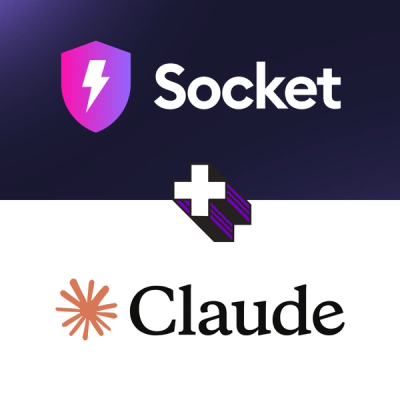
Product
Introducing Socket MCP for Claude Desktop
Add secure dependency scanning to Claude Desktop with Socket MCP, a one-click extension that keeps your coding conversations safe from malicious packages.
github.com/nimbusec-oss/webrisk
The webrisk Go package can be used with the
Google Cloud WebRisk APIs (Beta)
to access the Google Cloud WebRisk lists of unsafe web resources. Inside the
cmd sub-directory, you can find two programs: wrlookup and wrserver. The
wrserver program creates a proxy local server to check URLs and a URL
redirector to redirect users to a warning page for unsafe URLs. The wrlookup
program is a command line service that can also be used to check URLs.
This README.md is a quickstart guide on how to build, deploy, and use the
[WebRisk](https://godoc.org/cloud.google.com/go/webrisk/apiv1beta1) Go package. It can be used out-of-the-box. The GoDoc and API
documentation provide more details on fine tuning the parameters if desired.
To download and install from the source, run the following command:
go get github.com/google/webrisk
The programs below execute from your $GOPATH/bin folder.
Add that to your $PATH for convenience:
export PATH=$PATH:$GOPATH/bin
The program expects an API key as a parameter, export it with the following command for later use:
export APIKEY=Your Api Key
The wrserver server binary runs a WebRisk API lookup proxy that allows
users to check URLs via a simple JSON API.
Once the Go environment is setup, run the following command with your API key:
go get github.com/google/webrisk/cmd/wrserver
wrserver -apikey $APIKEY
With the default settings this will start a local server at 127.0.0.1:8080.
The server also uses an URL redirector (listening on /r) to show an interstitial for anything marked unsafe.
If the URL is safe, the client is automatically redirected to the target. Else, an interstitial warning page is shown as recommended by Web Risk.
Try these URLs:
127.0.0.1:8080/r?url=http://testsafebrowsing.appspot.com/apiv4/ANY_PLATFORM/MALWARE/URL/
127.0.0.1:8080/r?url=http://testsafebrowsing.appspot.com/apiv4/ANY_PLATFORM/SOCIAL_ENGINEERING/URL/
127.0.0.1:8080/r?url=http://testsafebrowsing.appspot.com/apiv4/ANY_PLATFORM/UNWANTED_SOFTWARE/URL/
127.0.0.1:8080/r?url=http://www.google.com/
The server also has a lightweight implementation of the API v4 threatMatches endpoint.
To use the local proxy server to check a URL, send a POST request to 127.0.0.1:8080/v1beta1/uris:search with the following JSON body:
{
"uri":"http://testsafebrowsing.appspot.com/apiv4/ANY_PLATFORM/MALWARE/URL/",
"threatTypes":[
"MALWARE"
]
}
The wrlookup command-line binary is another example of how the Go Safe
Browsing library can be used to protect users from unsafe URLs. This
command-line tool filters unsafe URLs piped via STDIN. Example usage:
$ go get github.com/google/webrisk/cmd/wrlookup
$ echo "http://testsafebrowsing.appspot.com/apiv4/ANY_PLATFORM/MALWARE/URL/" | wrlookup -apikey=$APIKEY
To perform an end-to-end test on the package with the WebRisk backend, run the following command:
go test github.com/google/webrisk -v -run TestWebriskClient -apikey $APIKEY
FAQs
Unknown package
Did you know?

Socket for GitHub automatically highlights issues in each pull request and monitors the health of all your open source dependencies. Discover the contents of your packages and block harmful activity before you install or update your dependencies.

Product
Add secure dependency scanning to Claude Desktop with Socket MCP, a one-click extension that keeps your coding conversations safe from malicious packages.

Product
Socket now supports Scala and Kotlin, bringing AI-powered threat detection to JVM projects with easy manifest generation and fast, accurate scans.

Application Security
/Security News
Socket CEO Feross Aboukhadijeh and a16z partner Joel de la Garza discuss vibe coding, AI-driven software development, and how the rise of LLMs, despite their risks, still points toward a more secure and innovative future.